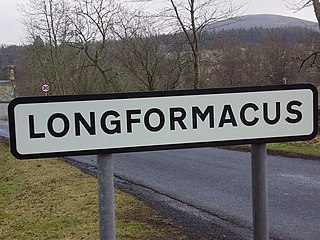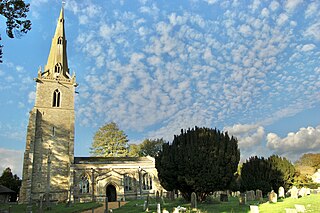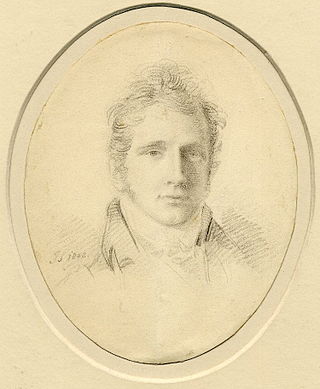
Kinghorn is a town and parish in Fife, Scotland. A seaside resort with two beaches, Kinghorn Beach and Pettycur Bay, plus a fishing port, it stands on the north shore of the Firth of Forth, opposite Edinburgh. According to the 2008 population estimate, the town has a population of 2,930.

McVitie's is a British snack food brand owned by United Biscuits. The name derives from the original Scottish biscuit maker, McVitie & Price, Ltd., established in 1830 on Rose Street in Edinburgh, Scotland. The company moved to various sites in the city before completing the St. Andrews Biscuit Works factory on Robertson Avenue in the Gorgie district in 1888. The company also established one in Glasgow and two large manufacturing plants south of the border, in Heaton Chapel, Stockport, and Park Royal, London. There are seven McVitie's factories in the UK, with each producing a different types of biscuit; the Harlesden site in north-west London manufactures the chocolate digestives.

Kelly's Directory was a trade directory in England that listed all businesses and tradespeople in a particular city or town, as well as a general directory of postal addresses of local gentry, landowners, charities, and other facilities. In effect, it was a Victorian version of today's Yellow Pages. Many reference libraries still keep their copies of these directories, which are now an important source for historical research.

In European folklore, a need-fire is a fire kindled by friction, which is lit in a ritual and used as protective magic against murrain, plague and witchcraft. It was a tradition in parts of northern, western and eastern Europe until the 19th century, among Germanic, Gaelic and Slavic peoples.

Longformacus is a small village in Berwickshire in the Scottish Borders area of Scotland. It is around 10 kilometres (6.2 mi) north-west of Duns, in the Lammermuir Hills. The Dye Water runs through the village, flowing east towards its confluence with the Whiteadder Water nearby.

Ballinluig is a village in Perth and Kinross, Scotland. It lies on the banks of the River Tummel in Logierait Parish, and is approximately 4 miles southeast of Pitlochry. It developed with the building of the Highland Railway, and sat where a branch line went off to Aberfeldy, both the branch line and Ballinluig station were closed in 1965.

Forgandenny is a small village in Perth and Kinross, Scotland, located four miles south of Perth. Perth is a 20-minute bus ride from Forgandenny, and there is a regular Stagecoach service. It is 45 minutes from Edinburgh and one hour from Glasgow. There is a daily train service from Perth to London King's Cross.

Pigot's Directory was a major British directory started in 1814 by James Pigot.

Garnkirk is a settlement in North Lanarkshire, located a mile (1.5 km) southwest of Muirhead. It is located 10 km northeast of Glasgow's city centre and 23 km southwest of Falkirk. Garnkirk is connected via the nearby motorways M8, M73 and M80. This provides access to Cumbernauld, Glasgow and Stirling. The nearest modern railway stations are in Gartcosh and Stepps.

Cranshaws is a village on the B6355 road, near Duns, in the Scottish Borders area of Scotland, in the former Berwickshire.
Isaac Slater was a British publisher of trade directories.
James Pigot was a British publisher of directories, and a pioneering publisher of trade directories.
Lt Col Andrew Frazer FRSE, was a Scottish soldier and engineer. He served as lieutenant-colonel of engineers, designing and superintending the construction of Fort George. He was the architect of St Andrew's Church, on George Street, Edinburgh.

Church of St Peter is a Grade I listed church in Sharnbrook, Bedfordshire, England. It became a listed building on 13 July 1964. The parish church is dedicated to Saint Peter. It is of Gothic architecture style, with a tower and spire. Its interior is decorated with monuments. A hand-tinted aquatint of 'Sharnbrook Church, Bedfordshire' was drawn, engraved and published by Thomas Fisher on November 4, 1812.

Alexander Thom (1801–1879) was a Scottish publisher, the founder of Thom's Irish Almanac.

George Street is the central thoroughfare of the First New Town of Edinburgh, planned in the 18th century by James Craig.
Sir Samuel Toller (1764–1821) was an English advocate-general of Madras and legal writer.

Joseph Slater was a British portrait painter and draughtsman.
The Sheriff of Edinburgh was historically the royal official responsible for enforcing law and order and bringing criminals to justice in the shire of Edinburgh in Scotland. In 1482 the burgh of Edinburgh itself was given the right to appoint its own sheriff, and thereafter the sheriff of Edinburgh's authority applied in the area of Midlothian outside the city, whilst still being called the sheriff of Edinburgh. Prior to 1748 most sheriffdoms were held on a hereditary basis. From that date, following the Jacobite uprising of 1745, they were replaced by salaried sheriff-deputes, qualified advocates who were members of the Scottish Bar.

105 George Street, The Rocks is a heritage-listed shop and former residence located at 105 George Street, in the inner city Sydney suburb of The Rocks in the City of Sydney local government area of New South Wales, Australia. It was built during 1851 by persons unknown and redeveloped in 1985 by the Sydney Cove Redevelopment Authority with Co-Wyn Construction. It is also known as Kathmandu (current) and Beach Culture and Dorian Scott (former). Property NSW, an agency of the Government of New South Wales. It was added to the New South Wales State Heritage Register on 10 May 2002.















